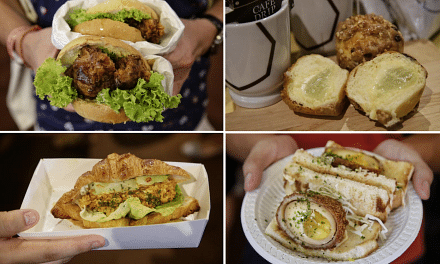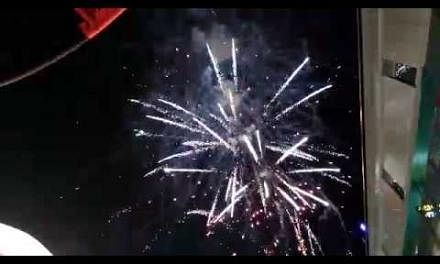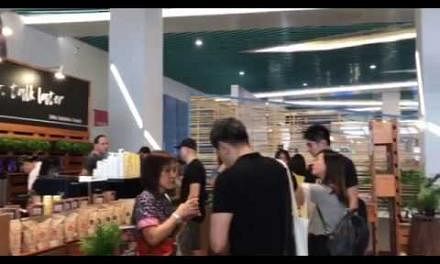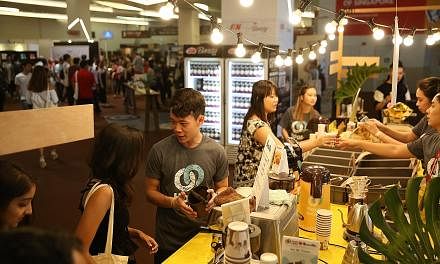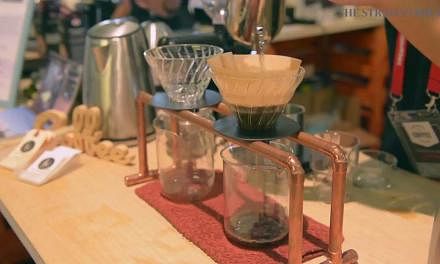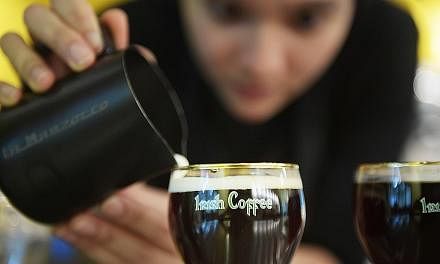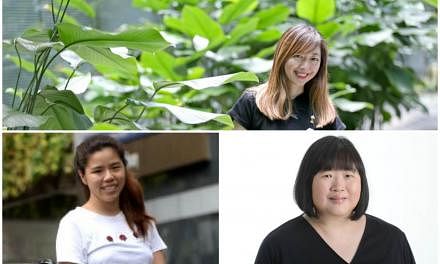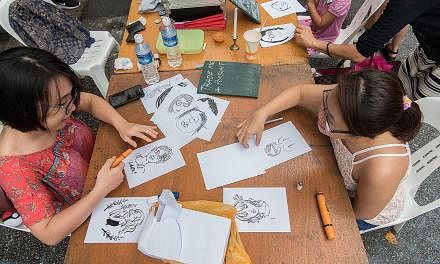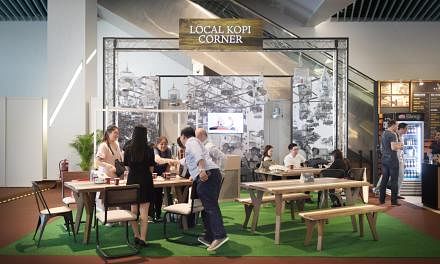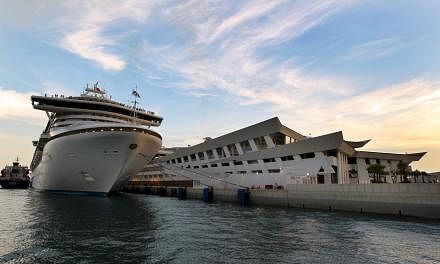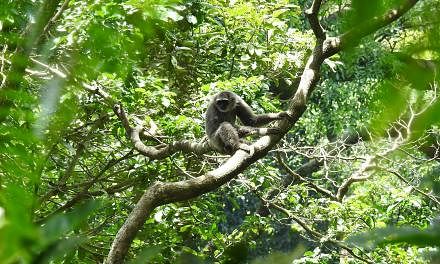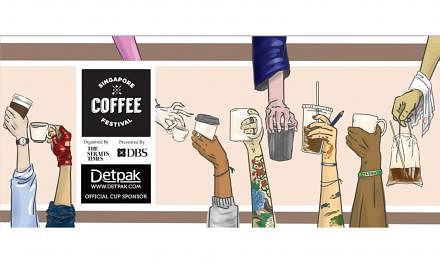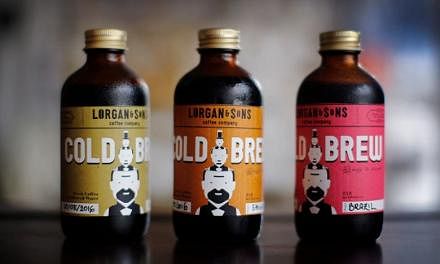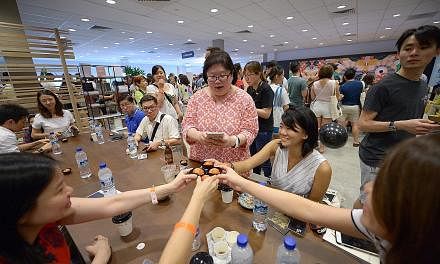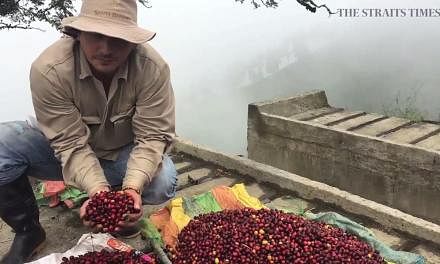-

BOOK IT / SINGAPORE COFFEE FESTIVALWHERE: Marina Bay Cruise Centre, 61 Marina Coastal Drive
WHEN: Aug 4 to 6, 10am to 3.30pm and 4.30 to 10pm daily
ADMISSION: Tickets are $22, or $18 for DBS and POSB cardholders, ST subscribers or groups of four
INFO: Go to www.sgcoffeefestival.com or e-mail sgcoffeefest@sph.com.sg
BOOK IT / SINGAPORE COFFEE FESTIVAL PANEL DISCUSSION WITH CHAT BUDDY: FOOD CORRESPONDENT REBECCA LYNNE TAN
WHERE: Exotic Tastes (ST Lounge), Marina Bay Cruise Centre, 61 Marina Coastal Drive
WHEN: Aug 5, 6.30pm
INFO: This panel discussion explores the origins of coffees showcased at the Singapore Coffee Festival. It features panellists, including Straits Times journalist Rachael Boon, who will talk about a coffee bean's journey from Colombia to Singapore and Kiss 92 deejay Joshua Simon, who will focus on Sumatran coffee.
From bean to cup - exploring coffee country in Colombia
A visit to coffee's home ground of Antioquia in Colombia is a treat for those accustomed to seeing their coffee beans in a bag
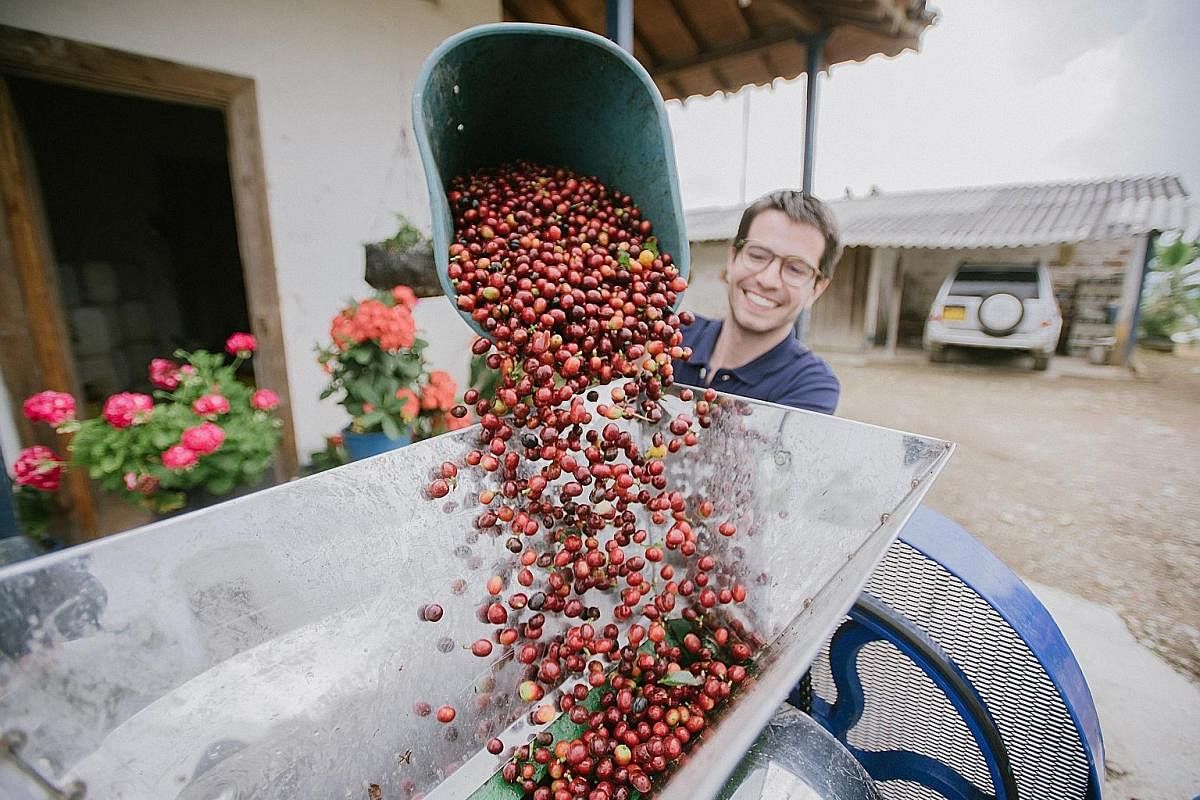
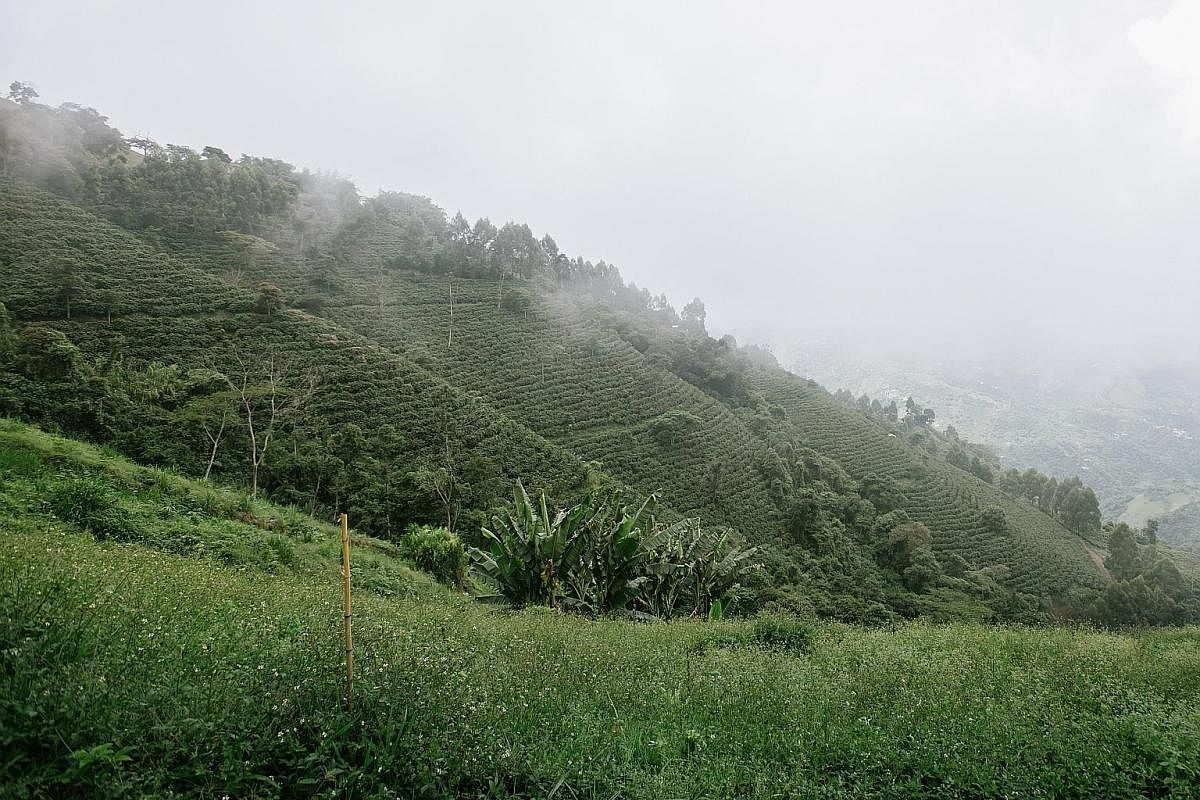
As I step into the Colombian coffee farm set on a mountain, I take a moment to drink in the beauty around me.
The slopes in the distance are covered with neat rows of coffee trees and shrouded in late-morning mist and greenery as far as the eye can see.
I pass a few mounds of bright red coffee fruit, or cherries, on the La Camelia farm in the town of Santa Barbara.
I am in Colombia's coffee county in Antioquia, one of the biggest coffee producers among 32 departments, or states, in the country synonymous with coffee.
On the 16ha farm, set 1,900m above sea level, 120,000 trees thrive.
I accompany Mr Adrian Khong, 48, owner of the Jewel Coffee chain of cafes in Singapore, who is on his first speciality coffee origin trip.
With us are our Colombian hosts, speciality coffee producer and exporter Pedro Echavarria, who owns several farms, and Mr Juan Cano, who works for speciality coffee merchant Mercanta.
We are about a two-hour drive from Medellin, Antioquia's capital and the second largest city in Colombia.
I am most familiar with coffee beans in their roasted form, with their heady scent wafting fresh out of a bag, so seeing how it all begins is a treat.
We set foot on a slightly muddy and narrow path to the farm, which grows two varietals. The Colombia varietal, with classic caramel and chocolate notes, makes up 70 per cent of the farm, while 30 per cent is Caturra Chiroso, known for its bright acidity.
We are there towards the end of a fly crop, which is a smaller harvest - there are two a year - that happens between March and May, Mr Echavarria says, and most of the cherries have been picked by now.
Coffee trees can grow up to several metres, but are pruned to between 1 and 1.5m or so.
Mr Echavarria, who studied economics, political science and international relations at Massachusetts' Tufts University, tells us the coffee flowers bloom only after an intense period of dryness.
It is common to see green and red cherries on the same tree as they mature at different times - taking about seven months to do so - so the same tree can be picked several times in a cycle.
As we make our way higher up the slopes, Mr Cano plucks a couple of firm fruit off the branches and encourages me to taste the seeds.
The oxblood-coloured fruit have little flesh and no discernible scent.
As I pinch one, yellow seeds covered in a a thin, sticky veil of mucilage pop out onto my palm - my first contact with raw coffee beans. They taste of subtle sweetness, with none of the earthy aroma of coffee.
The trek gets a little steeper and after about 20 minutes, we stop at a nook where Mr Echavarria tells us how coffee pickers stop to send their haul back to the main farm building via a cart on a cable.
It makes their lives much easier, he says, as a good picker can gather between 100kg and 300kg of cherries, while the cart transports about 500kg in about a minute.
Lunch beckons and we head over to the farmhouse. I have worked up an appetite trekking through the coffee trees and cannot wait to experience a homemade Colombian meal.
Soon, we are tucking into long-grained steamed white rice; crispy fried plantain; and perfectly pan-fried chicken seasoned with salt and paper.
Next, we are off to see a coffee pulper in action, driving through several winding roads, sometimes on the edge of the slopes.
Mr Echavarria says some of the roads to the farms were constructed by his firm Santa Barbara Estate - which also owns the Pergamino speciality coffee brand and cafe in Medellin - where there were no tracks before.
We reach the nursery of 10,000 seedlings in one piece, and it is also where we find 20 raised drying beds for the beans and a small pulping machine that removes coffee seeds from fresh fruit.
Cherries pulped immediately after harvesting are part of the wet method, where the beans are also known as washed coffee, which are said to taste cleaner and more complex.
In the dry method, cherries are left to dry for up to four weeks before the seeds are separated from the pulp and parchment.
We then head to a different house, where I am about to have my brew, certainly a rite of passage for any guest to a coffee farm.
Mr Echavarria pulls out a bag of Pergamino's Lomaverde beans, named after the finca, or estate in Spanish, that is 1,750m above sea level.
Freshly boiled water that has cooled slightly is poured over newly ground beans in a filter. Bubbles soon appear and create a chocolate-coloured foam layer. I take a small sip and find it unusually smooth and sweet and Mr Echavarria points out notes of chocolate and caramel.
Young Colombians such as Mr Echavarria, 30 - whose family has been in the coffee business for several decades - are finding ways to elevate the traditional coffee industry.
"Most of the good coffee in Colombia gets exported and we usually drink only the sub-products or whatever is left over.
"At Pergamino, we're trying to change that, to get Colombians to drink the best Colombian coffees."
We also visit the Pergamino mill, a dry mill that processes up to 20,000 bags of coffee a year and where cupping sessions are held to analyse thousands of samples a year.
We go through one session and it is hard for me to keep up with Mr Khong and the rest.
They break the "crust" - a layer of grounds which forms after hot water is poured onto grounded beans - of each cup and proceed to suck it noisily from the spoon, taking in air and letting the coffee hit the roof of the mouth and coat the tongue. This is how you get the full aromatic experience, they say.
After tasting several cups, I take a break and savour the fragrance that lingers in the room.
My favourite is the Camelia coffee as it tastes bright and clean with a hint of fruit.
The processes of cupping, or coffee tasting, coffee harvesting and production are similar to wine.
Each step is crucial in developing the flavours and, Mr Khong says, producing coffee, like making wine, is a science.
The Pergamino mill is also where the beans are roasted to perfection. Not all the beans are roasted, however, as green coffee beans are also exported to cafes such as Jewel Coffee, which roast the beans themselves. Jewel Coffee has 10 outlets in Singapore.
After the lessons of tasting and grading coffee, we move on to the San Pascual farm, with an altitude of 1,500m to 1,800m.
With 20ha in production, the farm produces 250 bags of green coffee a year.
Mr Echavarria drives us to one of the highest spots, and also his favourite, on the farm, for an almost aerial view of the gorgeous vistas, where clouds meet the mountains.
Overlooking this part of the massive coffee-producing region, made up of several family-owned farms, there is an irony that Colombians do not get to savour the best coffee the country has to offer, given the laborious effort they have put into producing it.
However, I feel comforted by the potential these lands hold for Colombia's burgeoning coffee scene and next-generation coffee businesses.
•The writer's trip was hosted by Jewel Coffee, which will be at the Singapore Coffee Festival.
Journey from bean to cup
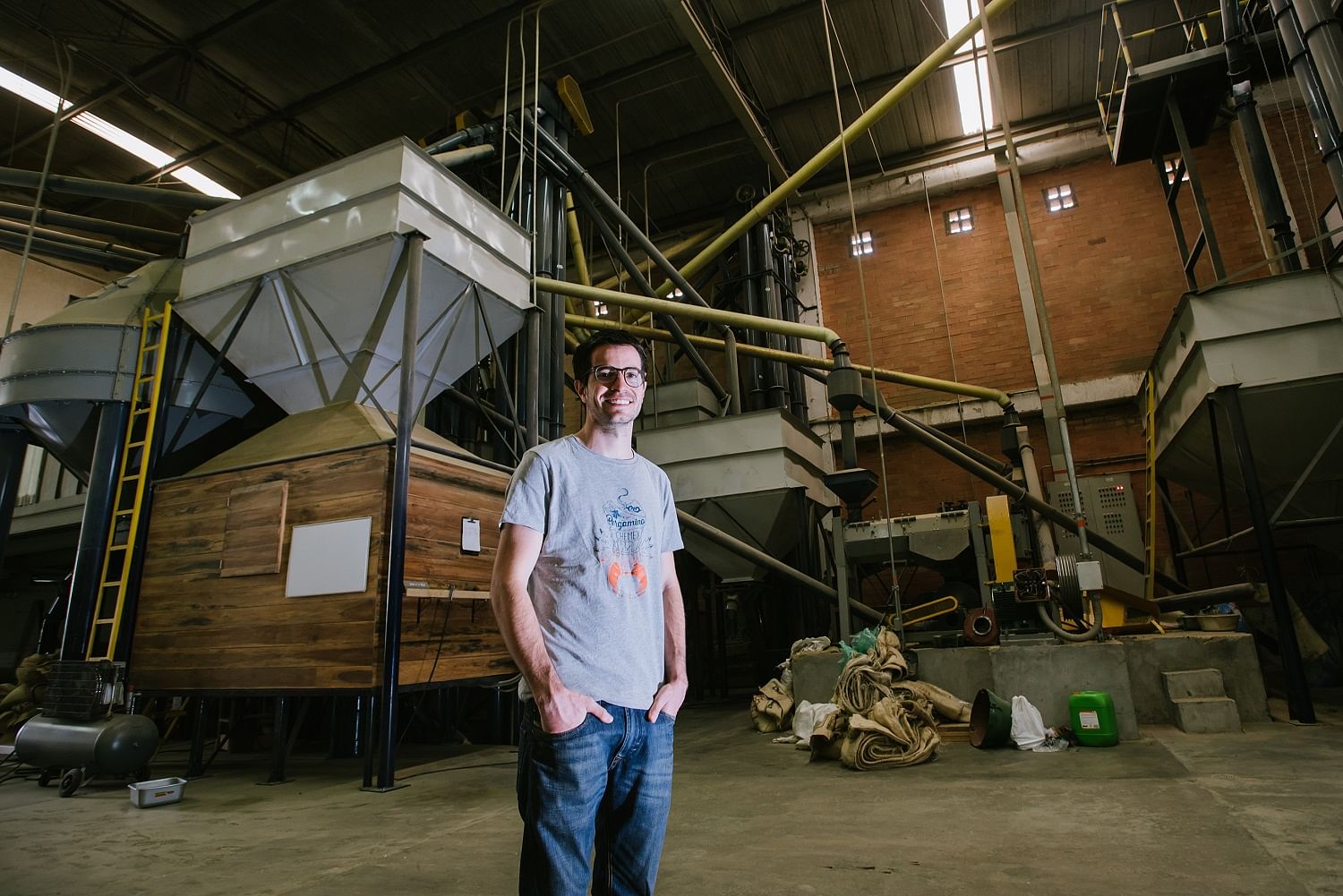
•Coffee cherries are picked by hand every eight to 10 days during the harvesting season - from September to December (main crop) and from March to May (fly crop).
•The coffee fruit is sent to the dry or wet mill. At the dry mill, coffee cherries are dried for up to four weeks. Seeds are then separated from the pulp and parchment. The coffee beans are cleaned and polished. At the wet mill, which produces washed coffee, coffee cherries are pulped to separate the seeds from the fruit. The seeds then undergo several stages such as fermentation, washing and drying.
•After the drying phase, high- quality raw coffee beans turn green or greyish blue. Beans with brown hues are considered inferior and removed.
•The beans are sorted by size, density, colour, appearance and grades. Sorting and preparing beans for speciality coffee is stricter than usual.
•The coffee beans are either packed for exporting or roasted.
•The notes and complexity of the beans are analysed via cupping , or coffee-tasting, sessions.
•The roasted beans are packed and sent to cafes and stores, ready for brewing.
•Order your coffee from the barista and savour your brew.
From murder capital to vibrant city

Medellin, the second largest city in Colombia, has long moved on from its drug-ridden days.
Upscale, trendy neighbourhoods such as El Poblado look remarkably similar to the streets of Kuala Lumpur's popular shopping and dining district Bangsar and its trendy food-and-beverage joints would not look out of place in New York or Los Angeles.
This is not a bad turnaround for a city that was, in the 1970s to 1990s, under the tight control of cocaine king Pablo Escobar. Then, it was also known as the murder capital of the world.
The city has done so well that it was given last year's Lee Kuan Yew World City Prize, a biennial award by Singapore's Urban Redevelopment Authority (URA) and the Centre for Liveable Cities. It honoursthe creation of vibrant, liveable and sustainable urban communities.
As we make our way from our hotel in Medellin's business area to the famed Botero Plaza downtown, the streets get noticeably busier and grittier.
-
GETTING THERE

Singapore Airlines (singaporeair.com) flies daily from Singapore to Los Angeles via Seoul or Narita airports.From Los Angeles, I took a connecting flight on Copa Airlines (copaair.com), to Medellin via Panama. The Panama carrier operates at least five such daily flights.
Peddlers hawk souvenirs in the plaza known for its 23 abstract sculptures by acclaimed Medellin artist Fernando Botero, whose work Singaporeans would find familiar. Several of his artworks are displayed in Singapore, including the sculpture named Bird outside United Overseas Bank Plaza.
We later ride the Metro in Medellin. The cabins are not air-conditioned and look a little worn but clean.
Our guide tells us that citizens are extremely proud of their public transport systems as they are a symbol of how the city overcame its darker days.
Change started in 1991, when Medellin's new Constitution let local governments choose their leaders, who were given the power to work on things such as urban design.
Medellin's leaders introduced cable cars to connect poor communities in the hilly suburbs to the rest of the city. Looking down from one of the cars, one can see art peppered in areas across the impoverished neighbourhoods.
Art plays a huge role in the reinvention of Medellin and a great example is Comuna 13, once the most dangerous neighbourhood in Colombia.
The hilly area in the city's western edge, where homes are decked in myriad colours, has since flourished into an attraction for tourists and locals alike.
It is known for its colourful and elaborate graffiti-style art and there are even outdoor escalators for visitors to view the murals with ease as they make their way to the top of the neighbourhood.
A group of local guides runs free walking tours of the area (bogotagraffiti.com).
Cafe-hop in Medellin
The cafe culture in Colombia is starting to take flight. Here are some popular cafes in Medellin.
EL LABORATORIO DE CAFE

Next to the entrance of The Museum of Antioquia is a nondescript coffee shop with simple white walls that is one of the first few speciality coffee joints in town.
Its name means The Coffee Lab and the coffee is perfected to a science here.
Jars of roasted beans - such as the experimental Gesha varietal - line the counter. Baristas include the visitor in the coffee-making process, extending a whiff of ground beans to them before the brewing.
Where: Carrera 65a, 13-157, The Museum of Antioquia, Medellin
Info: Call 57-4-2515-931 or go to ellaboratoriodecafe.com
CAFE VELVET

This gorgeous cafe, with an Instagram-perfect sun-lit patio, is a couple of shops down from Pergamino Cafe.
It opened its doors in 2014 and offers a Latte Especial that has chocolate and fresh cream. It also has a branch in Brussels.
Where: Carrera 37 8a46, 050021 Medellin
Info: Call 57-4-3119-405 or go to cafevelvet.co
PERGAMINO CAFE
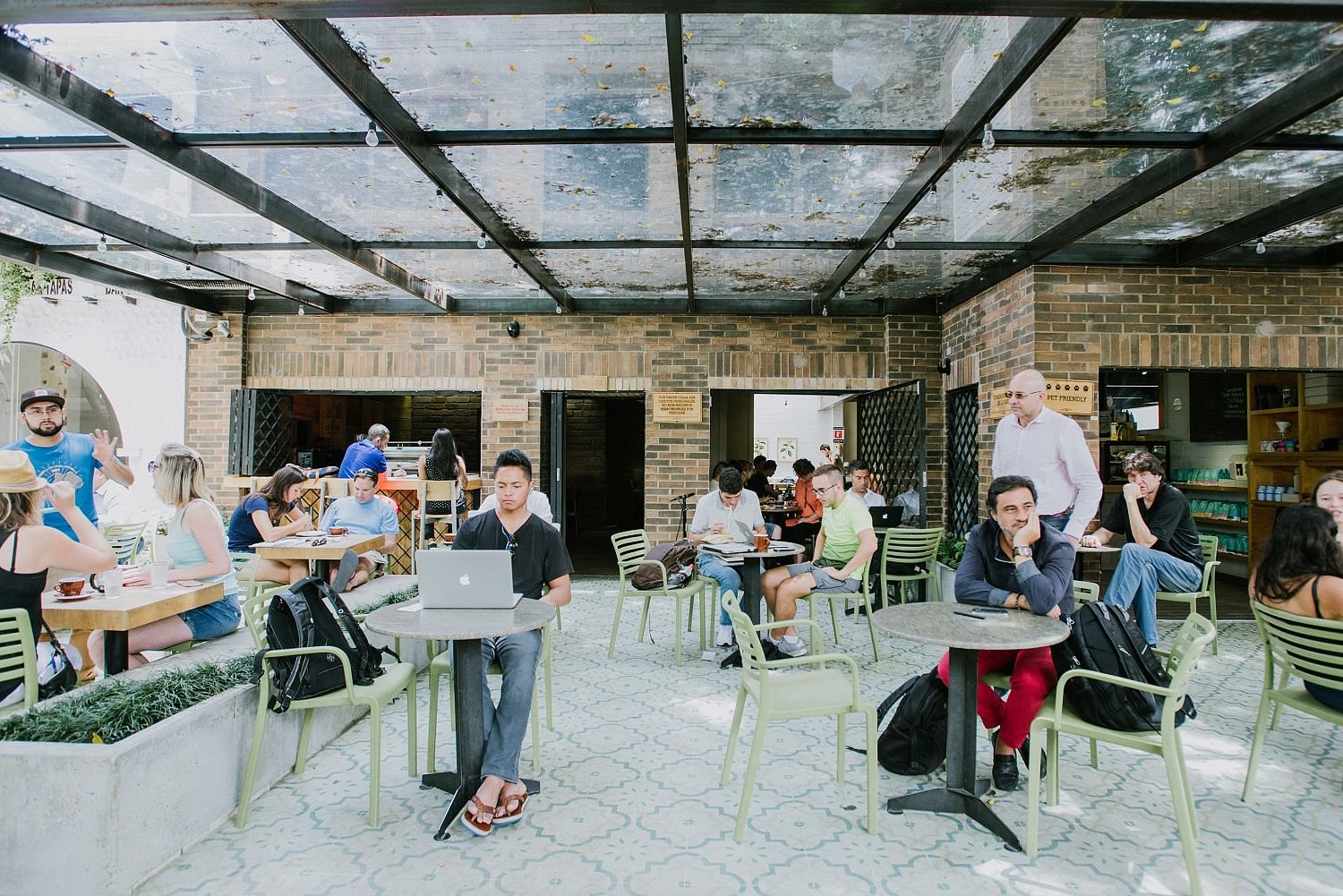
Pergamino - which means parchment in Spanish, referring to the layer that encases green coffee beans before they go through the dry milling process - is in one of Medellin's trendiest neighbourhoods.
Among the rows of dining and nightlife joints, it stands out with its chic outdoor seating area and wood-heavy interior with a skylight brightening things up.
The must-try drink here is the guandolo (6,900 pesos or S$3), a refreshingly addictive cold brew version of a popular Colombian drink with sugarcane and lime.
Where: Carrera 37 8A-37 (Vía Primavera), Medellin
Info: Call 57-4-2686-444 or go to us.pergamino.co
Join ST's Telegram channel and get the latest breaking news delivered to you.
A version of this article appeared in the print edition of The Sunday Times on July 23, 2017, with the headline From bean to cup - exploring coffee country in Colombia. Subscribe

